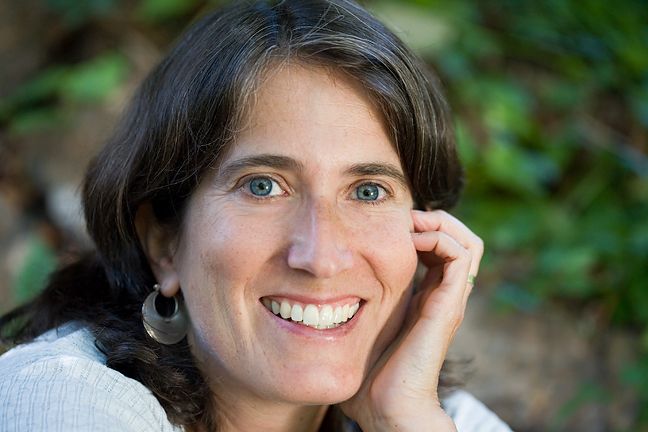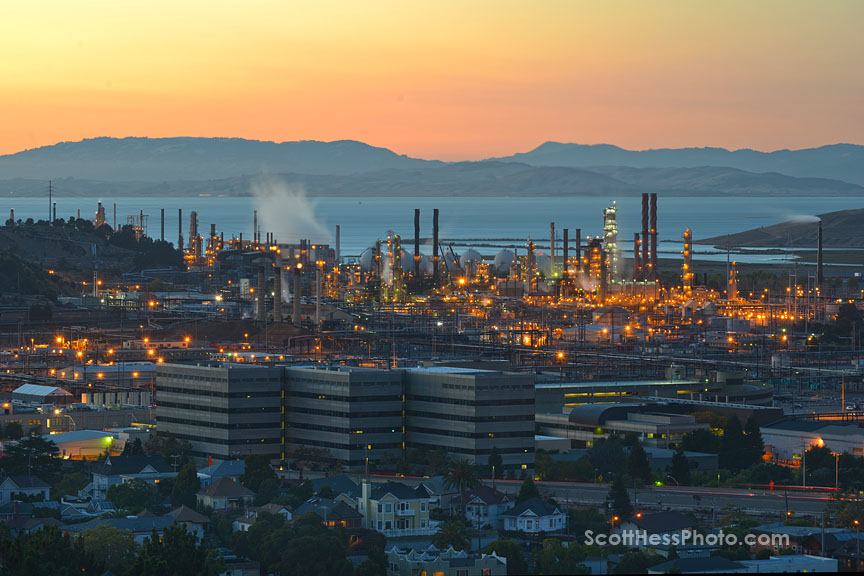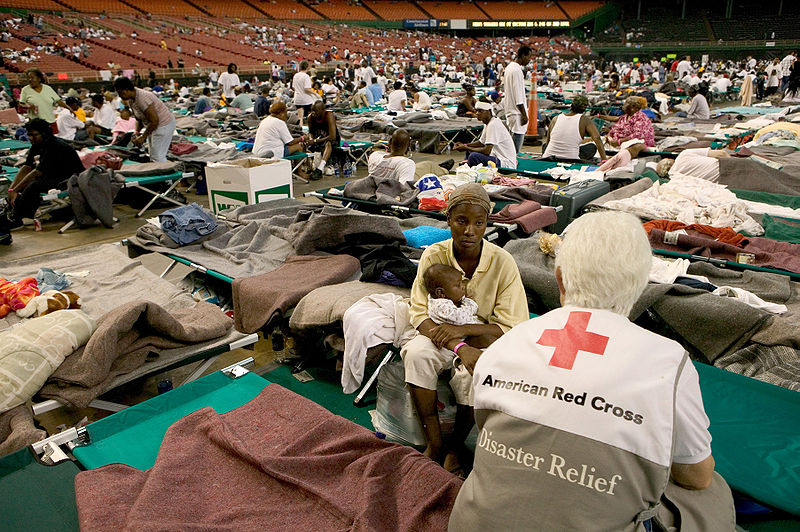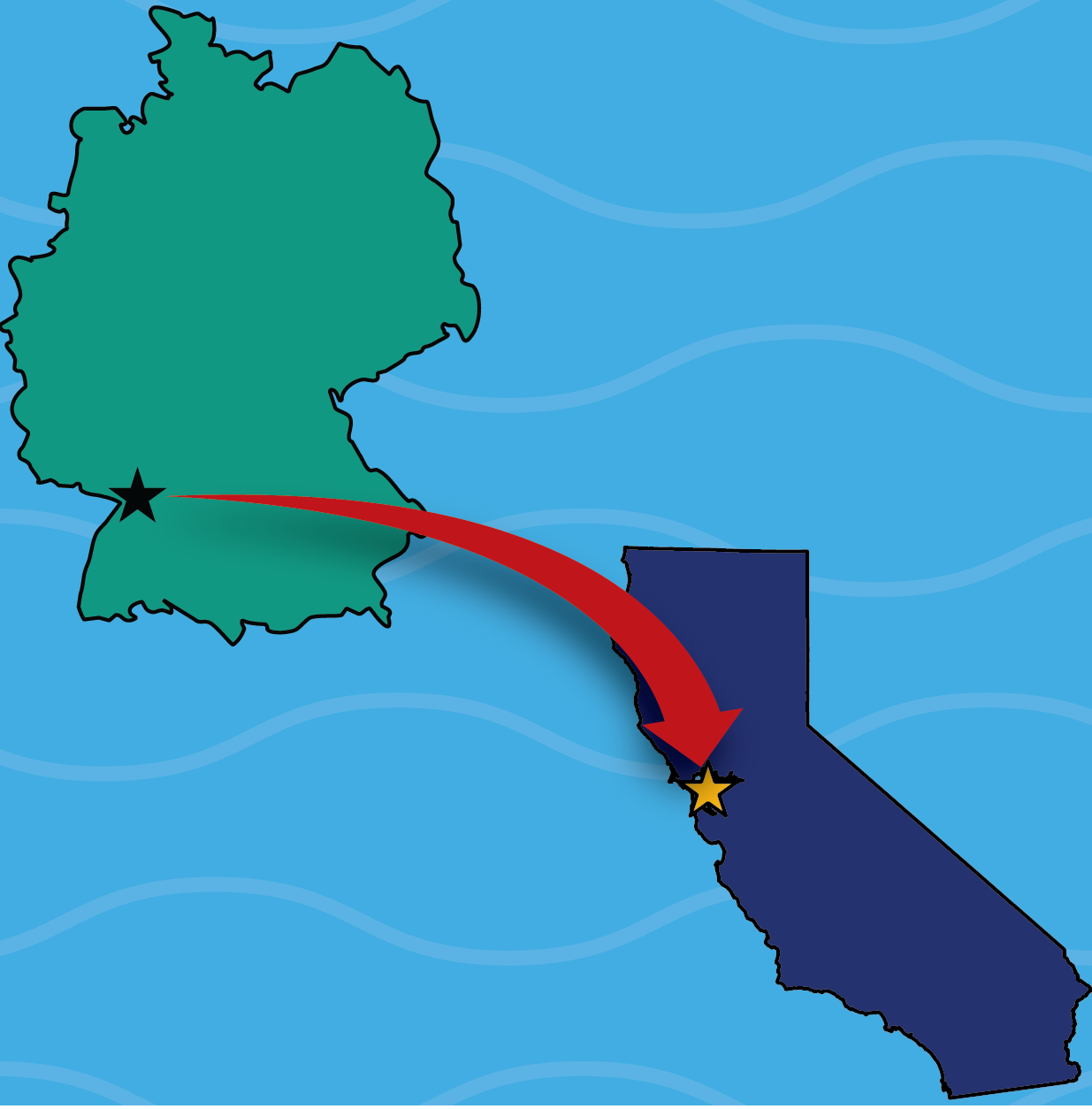Striving for Environmental Justice: An Interview with Rachel Morello-Frosch
October 31, 2019

This article is part of STEMinism in the Spotlight, a monthly interview series.
With the increasing urgency of the climate crisis, Rachel Morello-Frosch’s research could not be more important. Her work focuses on environmental justice and environmental health disparities, and she emphasizes working with communities to conduct research and develop solutions. Rachel Morello-Frosch is a professor in the Department of Environmental Science, Policy, and Management and the School of Public Health at UC Berkeley. She earned her PhD in Environmental Health Sciences, her MPH in Epidemiology and Biostatistics, and her BS in Development Studies, all from UC Berkeley. I had the opportunity to talk with her about her research, translating her findings into policy change, mentorship, and more.
Amanda Glazer (AG): Could you give us an overview of your research?
Rachel Morello-Frosch (RM): I’m an environmental health scientist and epidemiologist by training. The research that I work on looks at social determinants of environmental health disparities. In short form, that means looking at issues related to environmental justice. I try to understand why certain marginalized groups and populations are disproportionately exposed to different kinds of environmental hazards, whether that’s air pollution or environmental chemicals, where they bear a disproportionate burden of the adverse health effects of exposures to hazards. I work on these issues in addition to issues like climate change. I research what these issues mean for health and how we can study them in a way that not only documents the problem but also elucidates potential solutions and policy strategies to protect vulnerable communities.
AG: What does the term environmental justice mean?
RM: It depends who you ask. Environmental justice ensures that equity is baked into strategies for environmental sustainability, whether that is about climate change, resources management, food production, chemicals policy, etc. Environmental justice emerged from decades of organizing and integrating civil rights and human rights into US and international environmental movement building. It basically seeks to ensure that everyone, particularly communities of color and the poor, have access to healthy environments that enable them to thrive where they live, work, and play. It also ensures that communities of color and other historically marginalized groups have power to shape environmental decision-making.
What are some local examples where issues with environmental justice arise?
Probably one of the best examples of local struggles around environmental justice is near Berkeley, in the city of Richmond. Richmond is a thriving city in many ways. It’s super diverse. It has a multi-generational population of African American residents, many of whom came to the Bay Area to support the war industry in World War II. It has a sizable Latinx population, and more recently a diverse Asian immigrant population. Those communities face significant environmental challenges. Much of it is related to the petrochemical industry there, particularly the Chevron refinery, which impacts air quality and other things among communities that live nearby, particularly along the fence line. There are certain neighborhoods in Richmond that are near the refinery, but the city also has two major freeway corridors that bifurcate: the 580, which takes you across the Richmond Bridge towards Marin, and the 880, which takes you towards Sacramento. There are a lot of other kinds of industries that have grown up around Chevron that also impact the quality of life there and the air quality. Richmond has been an epicenter of environmental justice activism to try and address some of the environmental health challenges that the community faces.
 Chevron Refinery. Source: https://www.flickr.com/photos/scotthessphoto/10452969966/in/photostream/
Chevron Refinery. Source: https://www.flickr.com/photos/scotthessphoto/10452969966/in/photostream/
In addition to the things that are adversely impacting air quality, a lot of neighborhoods need more investment in physical and social infrastructure. People who live there are often facing chronic psychosocial stressors related to poverty, food deserts, poor housing quality, lack of green space, and a high proportion of violent crimes. Those kinds of stressors, when you are living with them all the time, can erode the body’s resilience and immune system. They can make you more vulnerable to the toxic effects of environmental hazard exposures or air pollution. People often call this situation a form of double jeopardy—where communities face combined exposures to environmental hazards and chronic psychosocial stress. That’s just an example, but there are lots across the country and globally.
Climate change and extreme weather events (flooding, fires, heat waves, etc.) often disproportionately impact the poor, because they are less likely to have the resources to protect themselves or evacuate. We have seen this with a lot of hurricanes recently. Most notably, the first time we started really having this conversation about climate injustice was Hurricane Katrina. We saw this unbelievable storm, and we knew it was coming. People in New Orleans knew what they had to do in terms of evacuating, but many folks just could not get out of the city due to lack of transit, car ownership, etc. They paid with their lives, because they couldn’t evacuate. Additionally, their ability to rebuild and restart their lives after Katrina was undermined because they were, for example, underinsured, their livelihoods were destroyed, or their schools were destroyed and never rebuilt or privatized. Much of the community infrastructure that was there, that was tenuous to begin with, was destroyed and government efforts to rebuild did not prioritize these communities at all. New Orleans had a huge demographic shift as a result of that major storm. A much higher proportion of the black population were not able to return to the city compared to the white population who had to evacuate. This is another example of environmental injustice in terms of the disproportionate impacts of the extreme effects of climate change on marginalized groups, low income folks, and communities of color.
 Aftermath of Hurricane Katrine. Source: https://commons.wikimedia.org/wiki/File:Katrina-14501.jpg
Aftermath of Hurricane Katrine. Source: https://commons.wikimedia.org/wiki/File:Katrina-14501.jpg
How much work do you do with other groups to translate your research into policy changes?
We’ve been fortunate in that we’ve tried to ask questions that have policy relevance. People in my lab and I do some projects that are community-based participatory research (CBPR). CBPR is where, as scientists, we collaborate with impacted communities to develop scientific projects and collect data together to address questions that are relevant to them and that inform their advocacy and organizing strategies.
For example, in Richmond, we developed a project with community members who live along the fence line of the Chevron oil refinery. It’s a housing complex called Atchison and Liberty Village. It’s actually a Rosie the Riveter historical site. Community members there have been concerned about the Chevron refinery and its impact on their health. For the longest time the city, as well as the industry, said that there’s no evidence that the refinery has any impact on air quality or on health. The reality was that there was no evidence, but not because studies had been done and no one had seen an association. It was because there was no data. Community members said, “No data doesn’t mean no problem. It just means no data.” So, in collaboration with my scientific colleagues at Silent Spring Institute on the East Coast and an environmental justice organization that had been doing a lot of organizing in Richmond called Communities for a Better Environment we co-developed a scientific project called the Household Exposure Study. In this study we did air quality monitoring both inside and outside of people’s homes in Liberty and Atchison. We also collected dust samples. We tried to characterize air quality inside and outside of people’s homes to get at the question: to what extent do oil refineries and oil refinery combustion activities impact air quality in people’s homes? We didn’t do a health study, but we did an exposure study. It was the first study that really documented the fact that oil combustion activities, in addition to other things that we found, were impacting the indoor air quality of people’s homes, particularly those along the refinery fence line. That helped start a conversation and gave community members valuable data that enabled them to say, “Actually, there is an issue here. People came and studied our homes and here are my results. It shows that levels of a metal called vanadium, which only comes from oil combustion activities, is in my home. It can’t be coming from any other source than that.” I work on other collaborative projects like that where I work with communities to co-develop and study a research question that yields scientific results that help inform how they can engage effectively with decision makers at the local, municipal, state or even federal level. Although things at the federal level are quite depressing right now.
Do you face resistance from decision-makers generally?
It depends on the context. California has been very forward thinking around its climate change policy and is really trying to have ambitious greenhouse gas reduction goals. We’re the 5th largest economy in the world, and we have climate change policy that we are forging ahead with and implementing, which is a great thing. We are very fortunate in California that environmental justice organizations throughout the state have played a really critical role in helping develop legislation. This led to the series of environmental justice-oriented climate change laws that we currently have and that are being implemented. These organizations also constantly hold decision-makers, like the California Air Resources Board, accountable for how they are implementing the law. I feel like that has been effective and resulted in situations where the results of some of our research does get taken into account by decision-makers. It’s not always perfect, and sometimes there is pushback. Nevertheless, the California Air Resources Board does fund some of our research and then sometimes it may not always agree with some of the conclusions that we come up with. But that situation opens an opportunity for dialogue and debate between regulatory decision makers, for example, at the Air Resources Board, and environmental justice advocates that really try to move regulation to better merge sustainability goals with environmental justice goals.
How do you feel like the current discussion and protests around climate change have been affecting this work?
I think it has been incredibly positive. In California in particular there has been really effective organizing and advocacy over several decades by environmental justice groups that have also been really good with working in coalition to have more voice, power and influence.
The industries that are regulated under California’s cap and trade law, which aims to reduce greenhouse gas emissions, need to be incentivized to reduce their emissions locally. Most of those industries are located in communities of color that have faced the adverse consequences of bad air quality as a result. So, California climate change law said that big industries have to reduce their greenhouse gases, and they have to participate in a market-based system of buying and trading auctions in order to come into compliance. What they used to be able to do for free, emit greenhouse gases, is no longer free. That’s a good thing, but people who live near these facilities, communities that have lived near refineries, and industrial, power, and cement plants, want to make sure that these industries don’t just buy their allowances somewhere else and are not compelled to reduce their emissions locally. Because for every pound of greenhouse gas you reduce in a local community, you’re also reducing what we call the co-pollutants that come out of the smokestack—the particulate matter and the volatile organic compounds, for example—that make people sick now. Our research indicates that more can be done to incentivize local reductions in the communities that need it the most. That way, you could be achieving greenhouse gas reductions and improving air quality at the same time in those communities that are hosting these industries.
How did you first become interested in environmental justice and your current research areas?
I was trained here at Berkeley in the School of Public Health. I got my Masters in Epidemiology and Biostatistics here, and then I got my PhD in Environmental Sciences. The Berkeley School of Public Health at the time was also known for developing scholars in the field now known as social epidemiology. Emeritus Professor Leonard Syme, trained many of these scholars who are now professors in social epidemiology across the country. Professor Syme, who forged the field of social epidemiology, was originally trained as a sociologist, and he was very interested in social determinants of health and looking at the ways in which structural, social factors can adversely affect people’s health. So, it pushed public health to not just focus on individual behavioral factors like diet, exercise, or whether you smoke, but more on the social forces and environment around you that can make you sick.
As a graduate student, I was studying environmental health sciences, toxicology, environmental chemicals, and how exposure to those compounds affect health. Then I realized, to move upstream, we need to focus on both the social as well as physical environmental factors that affect health and look at these two things together. That scientific and policy approach is potentially very impactful in terms of improving the health of entire communities and diverse populations. That’s what got me interested in having an interdisciplinary approach to environmental health science that also integrated methods in social epidemiology.
At the same time that I was being trained, the environmental justice movement was really becoming a force to contend with. It burst on the scene in the early 1980s, and then it was really coming into being in California when I was in graduate school in the early 1990s. There were fights around hazardous waste facilities in the Central Valley that were impacting predominantly Latinx communities in California and a lot of organizing around that. There was a lot of organizing going on in Richmond around the petrochemical industry as well. That sort of political shift in what constituted an environmental movement, which was integrating environmental concerns with social justice, civil rights, and human rights, also influenced my thinking as a scientist.
 Protest against Chevron. Source: https://commons.wikimedia.org/wiki/File:Mobilization\_for\_Climate\_Justice-\_Stop\_Chevron.jpg
Protest against Chevron. Source: https://commons.wikimedia.org/wiki/File:Mobilization\_for\_Climate\_Justice-\_Stop\_Chevron.jpg
So you were really drawn to that movement?
I was drawn by the ways in which people were really talking about the environment. And the connections to the ways in which racism and discrimination adversely impacts the physical environment of communities of color and the poor. Not necessarily overtly racist ways, but it’s more the structural, institutional, and procedural discrimination that leads to communities of color and the poor being disproportionately exposed to hazards compared to their white, wealthier counterparts, particularly in the United States. That caught my imagination as a scientist.
We have another emeritus professor in the School of Public Health, Meredith Minkler, who was pioneering a method of doing research, which she called community-based participatory research (CBPR). This method contrasted sharply to the traditional approach where scientists come into a community as the so-called expert, design a study, extract their data, do their analysis, and then publish the results of their work, without ever consulting or engaging communities in their project or reporting back the results of their study. Particularly when you are working with marginalized groups, those communities should be your research partners. They have their own forms of expertise. If you want to conduct solid scientific work and make sure it has an impact towards improving health, then communities should be your scientific partners from the beginning of your project. CBPR was a whole new method of doing science that was more about partnership rather than extraction. That influenced my thinking, and forced me to think more about how I, as an environmental health scientist, can do more CBPR. What kinds of projects make sense to do in collaboration with communities that collect novel data on really great scientific questions but also ask questions that are relevant to communities that are impacted by environmental hazards? Community partners are much better than nerdy scientists at leveraging research results to reach decision-makers, because they are the faces and have the stories behind your statistics. Community partnership can also improve the validity of your science. Community-engaged strategies for doing research really shift the paradigm of the ways in which scientists should be operating, particularly in the public health and/or environmental health realm.
Why did you choose to go into academia instead of working on these issues outside of academia?
While we work hard in academia, it provides critical infrastructure to do great science, to try new things, and to take risks. It enables you to teach, which I also love. I’m very passionate about my research, but I feel like you can’t have research without the teaching piece. I’m also interested in opportunities to mentor students and hopefully get them interested in this field and then go out and do it themselves. Then hopefully, if I do my job right, they end up doing this work better than I have. Those are my main motivations for doing my research through academia.
In public health there are lots of opportunities to do really interesting science. You can work for an agency like CalEPA, or in better times, you could also do great science at US EPA. Those institutions, traditionally, support good science. Although things are grim right now at the federal level, many career people in those agencies still support good science, even though many of Trump’s appointees don’t. I work with a lot of those Agency scientists in my projects. I might have gone in that direction, but I think you just have a little less freedom in forging your own path and taking on risky projects within a government agency. Non-governmental organizations (NGOs) also do that work. Often times they don’t have the infrastructure to do a lot of the scientific work that I want to do, so it can be a little more challenging. But NGOs, like the Environmental Working Group, Natural Resources Defense Council, and Environmental Defense Fund, among others, have generated outstanding research.
What is it that you like about teaching and mentorship?
Teaching keeps you on your toes. You have to be able to give people a reason to come to class several times a week and be enthusiastic about what you’re trying to teach them so that they keep coming back. I like that challenge. Students always ask good questions about things that you maybe didn’t think about.
In terms of mentorship, my favorite moments are lab meetings. In our lab meetings everyone presents a work in progress where they share analyses or a manuscript that they’re working on, or they’ll practice a job talk, or share a grant that they’re working on. My goal as a mentor is to create a supportive, intellectual community, so that people that are coming into this field feel that they have a really good space to test out ideas and get good, methodologically rigorous feedback that’s also supportive. Feedback that doesn’t make them feel stupid, but that makes them excited about learning something new, and feel OK about making mistakes, learning from them and continuing on. In terms of being a good mentor, part of that entails sharing success, but even more importantly it entails sharing failure. You have to share failure with people, because academia can be really tough. A lot of it is about rejection. You get your grants rejected and you get your manuscripts rejected. It’s par for the course. Part of the mentoring process is helping students learn not to internalize rejection or make it personal. It’s not even about the fact that your work isn’t worth funding or publishing. It often means that you can do your work better. I feel like as a mentor I need to show that to people. They shouldn’t only be reading the stuff I got published, but I also need to talk with them about all the grants that got rejected. In a supportive environment there’s people that can help you make your work better and be successful. That part of it is just teaching people that with rejection, you go back and make the work better—you rewrite the grant, the paper, whatever—and resubmit it. Hopefully in the end those seemingly harsh reviews made the work better, even though it was kind of painful. I try to create an environment, an intellectual community, like that.
Any last piece of advice for people interested in your field?
I think this is a great time to be doing work on environmental justice. It’s super interdisciplinary, so you see people in the sciences, engineering, the social sciences, and even in the humanities doing research that’s of relevance to this broader question of environmental justice. I think that’s super exciting.
There’s a lot going on at Berkeley. I also think that being in California, where the environmental justice movement is very well organized and has a great seat at the table in terms of state policy and making sure that regulatory agencies have the issue of environmental justice front and center as part of their regulatory mandate, makes Berkeley a great place to be doing this kind of research. There are all kinds of opportunities to ensure that the research is disseminated to decision-makers and can be implemented in ways that protect diverse communities from environmental hazards. I think that regardless of your discipline, if you are interested in environmental justice issues, there are a lot of opportunities to go into that work. There are some great people across campus that are working on it from different angles and from different disciplinary perspectives.
Featured imaged by Rachel Morello-Frosch.




